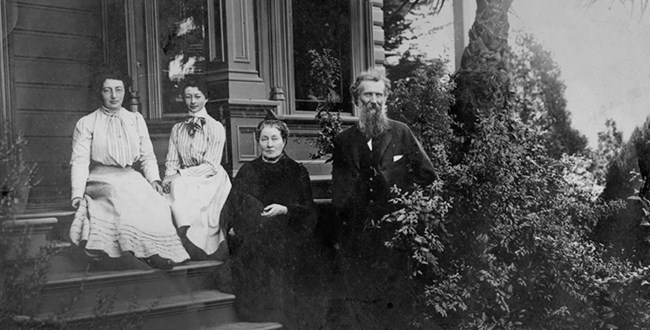John Muir's Family

JOMU Archive image. Influential People in John Muir's LifeThe John Muir National Historic Site isn’t just about John Muir—it’s a tribute to the many people who joined him in shaping the conservation movement. John Muir, lovingly called the "Father of the National Parks," was a naturalist and writer with an unshakable love for the wilderness. His words and actions inspired not only the creation of iconic national parks but also a lasting movement to protect and cherish the natural world. This site celebrates Muir’s vision and the collective efforts of those who stood beside him to make it a reality. Muir’s FamilyMuir’s family played a significant role in his life and work. His wife, Louie Strentzel Muir, was a supportive partner who managed their home and ranch, while their daughters, Wanda and Helen, continued his legacy through their own contributions to environmental preservation. Friends and ColleaguesJohn Muir’s journey as a conservationist wasn’t a solo endeavor. He was surrounded by a circle of friends, fellow conservationists, politicians, and thinkers who inspired and supported his work. Together, they shared ideas, debated policies, and championed the creation of protected natural spaces that we continue to treasure today. These collaborations weren’t just professional—they were personal bonds that fueled a shared passion for nature and its preservation. By learning about the lives and contributions of Muir’s companions, visitors can connect with the rich history of this site and better understand the teamwork and dedication it took to spark the modern conservation movement. Friends and Important Acquaintances
|
Last updated: December 19, 2024









